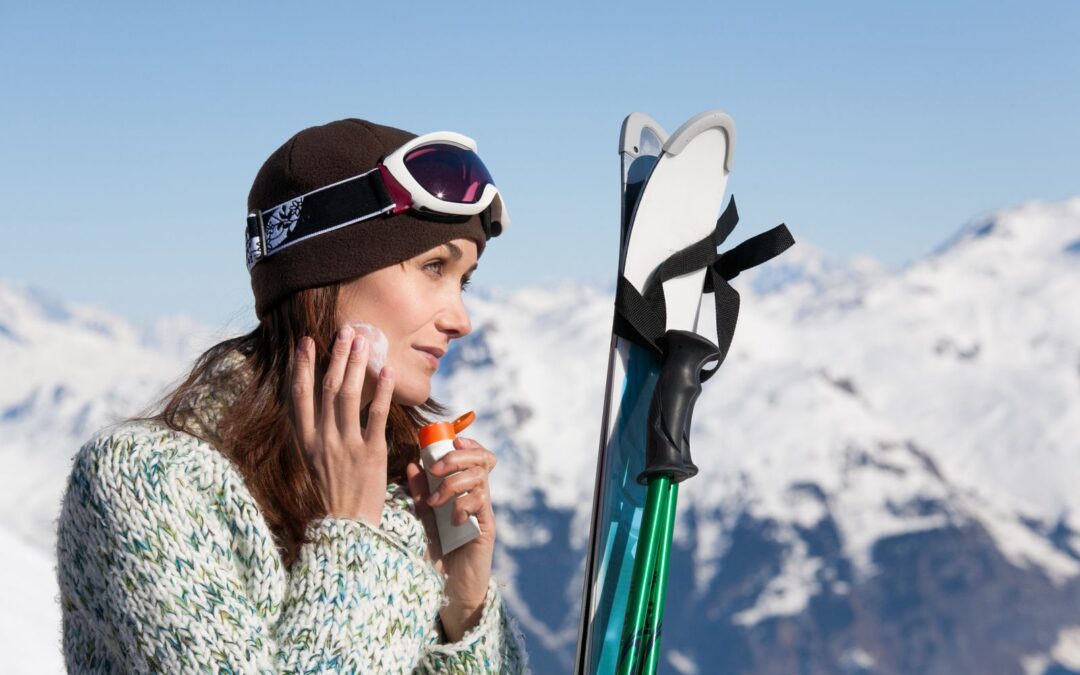As the colder months settle in and the sun’s warmth begins to fade, many people make the mistake of thinking their skin no longer needs protection. After all, the winter season often brings cloudy skies and shorter days. However, the reality is that skin cancer risks don’t disappear just because the temperature drops. In fact, winter weather can still contribute to skin damage, making sunscreen an essential part of your skincare routine all year round.
Understanding the Skin Cancer Risks in Winter
It’s easy to assume that skin cancer is only a concern during the summer months when the sun is brightest and hottest. However, even in colder weather, the sun’s harmful ultraviolet (UV) rays can damage your skin. UV rays are present year-round, regardless of the temperature or the amount of sunshine. They are capable of penetrating clouds, snow, and even windows, which means that winter doesn’t shield you from their harmful effects.
1. UV Radiation Is Present Year-Round
UV rays are divided into two types: UVA and UVB. Both types are harmful to the skin. UVA rays penetrate deeply into the skin and are responsible for premature aging and skin cancer development. UVB rays are more intense and are the primary cause of sunburn. While UVB rays may be less intense in the winter, UVA rays remain constant throughout the year.
2. Snow Reflects UV Rays
One significant risk during winter is the snow’s reflective surface. Snow can reflect up to 80% of UV rays, meaning that even when you’re outside on cloudy days or in areas with overcast skies, your skin is still being exposed to UV radiation. This reflection increases your UV exposure, especially in higher altitudes where the UV rays are more intense.
3. Winter Sunburns Are Real
Though winter sunburns are less talked about, they can occur, especially when you’re spending time outdoors in bright, snowy conditions. Skiers, snowboarders, and those who enjoy outdoor winter activities are at an increased risk of sunburn because of the sun’s reflection off the snow. It’s not uncommon to see a winter sunburn after a day of fun in the snow, and these burns can have the same long-term effects as those from the summer months.
The Importance of Sunscreen in Winter
With the risks of UV exposure still present in winter, wearing sunscreen becomes just as crucial as it is in the warmer months. Here’s why sunscreen should remain a part of your daily routine, even when the temperature drops:
1. Prevention of Skin Cancer
Skin cancer is one of the most common forms of cancer, and it’s largely preventable by protecting your skin from harmful UV rays. Regular sunscreen use throughout the year can significantly reduce your risk of developing basal cell carcinoma, squamous cell carcinoma, and melanoma. The risk of skin cancer is cumulative, meaning that even small doses of UV exposure over time can add up to significant skin damage and increase your chances of developing cancer in the future.
2. Protection from Premature Aging
UV exposure contributes to premature aging, causing wrinkles, fine lines, and loss of skin elasticity. This process is known as photoaging. Using sunscreen daily helps protect your skin from these effects, keeping it looking youthful and healthy, even in the winter months.
3. Preventing Sunburn
Although the sun may feel less intense in the winter, it can still cause skin damage. Applying sunscreen can prevent painful sunburns, which can lead to peeling, redness, and irritation. Consistent sunscreen use ensures that you don’t experience the discomfort of sunburns, even if you’re spending time outdoors in the winter.
How to Properly Protect Your Skin in Winter
In addition to wearing sunscreen, there are a few other steps you can take to protect your skin during the colder months:
1. Choose the Right Sunscreen
For winter, opt for a broad-spectrum sunscreen with an SPF of at least 30. Consider using a sunscreen with moisturizing properties to combat the dry winter air that can leave your skin feeling parched. Look for a sunscreen that’s water-resistant if you’re going to be engaging in outdoor activities such as skiing or snowboarding.
2. Cover Up
In addition to sunscreen, wearing protective clothing such as hats, scarves, and sunglasses can help shield your skin from UV rays. Sunglasses with UV protection are especially important in winter, as the snow’s reflection can damage your eyes and the delicate skin around them.
3. Reapply Sunscreen
Make sure to reapply sunscreen every two hours, especially if you’re outdoors for an extended period of time. Don’t forget areas that are commonly overlooked, like your ears, neck, and the back of your hands, as these areas are especially vulnerable to UV exposure.
Conclusion
Even though the winter months may seem like a reprieve from the sun’s harsh rays, the reality is that UV radiation is still present and can cause significant damage to your skin. Snow, reflective surfaces, and high altitudes all contribute to increased UV exposure, making it essential to continue using sunscreen and protecting your skin all year round. By making sun protection a part of your daily routine, you can significantly reduce your risk of skin cancer, premature aging, and sunburns, ensuring your skin remains healthy and vibrant for years to come.

